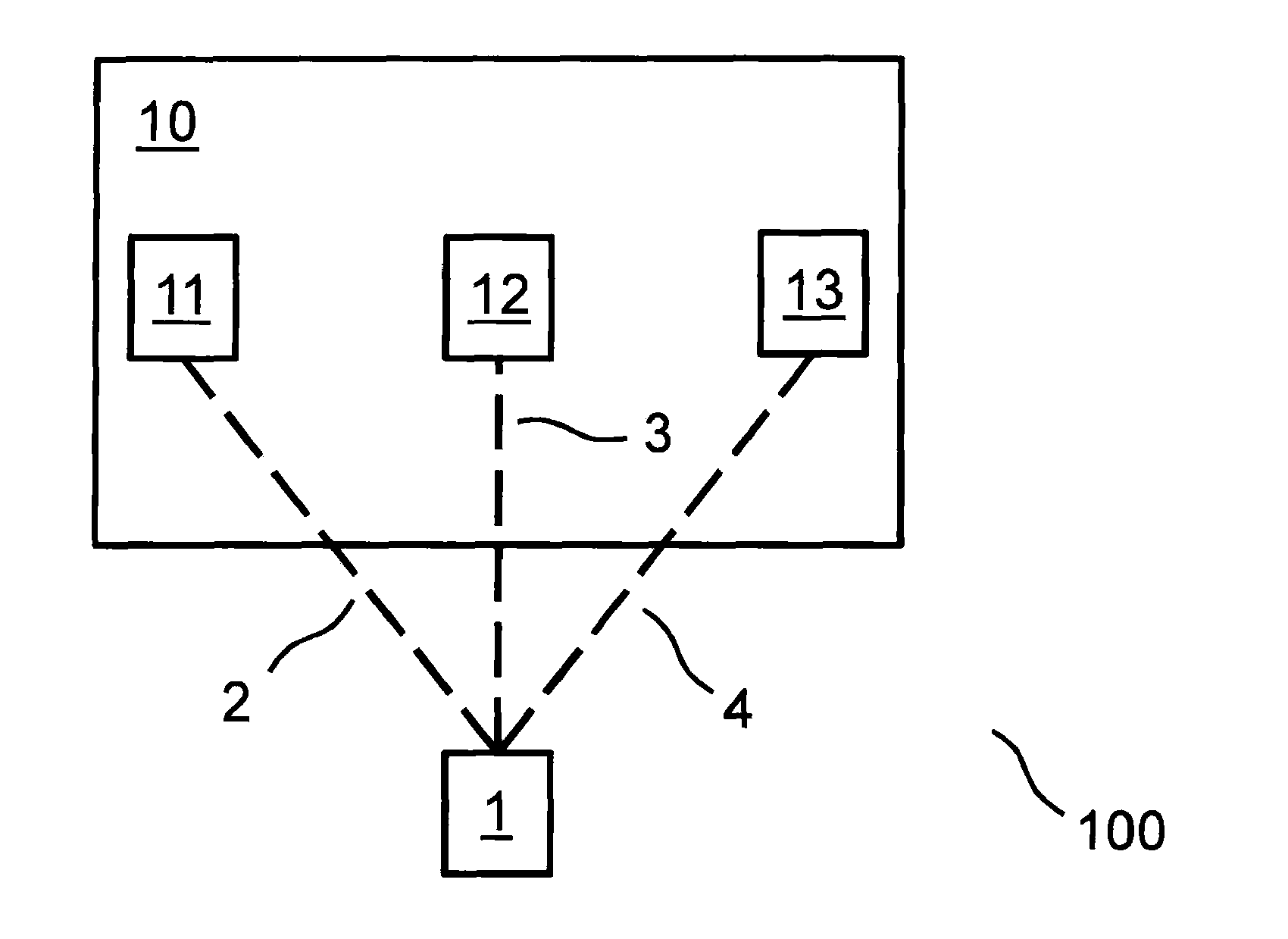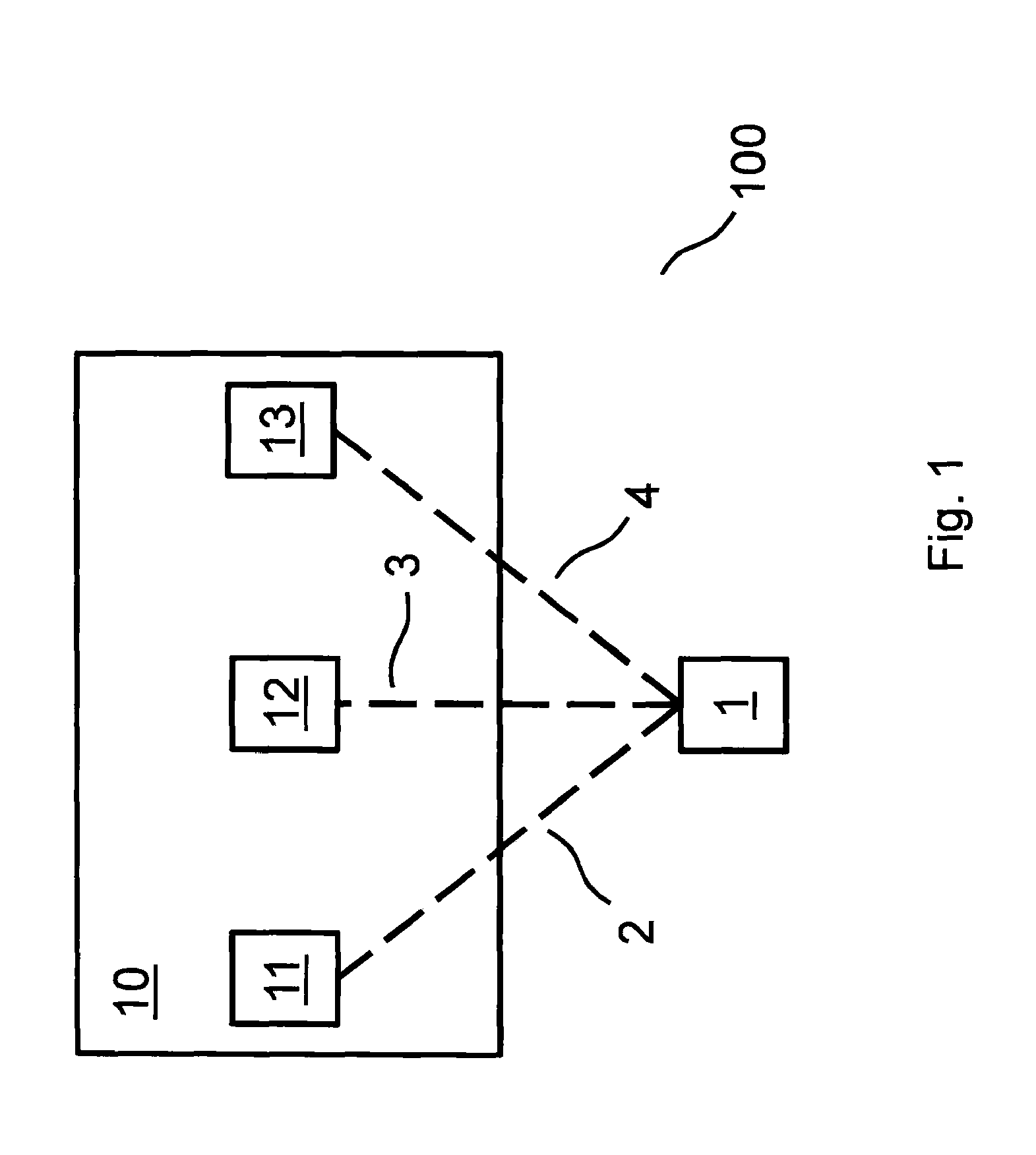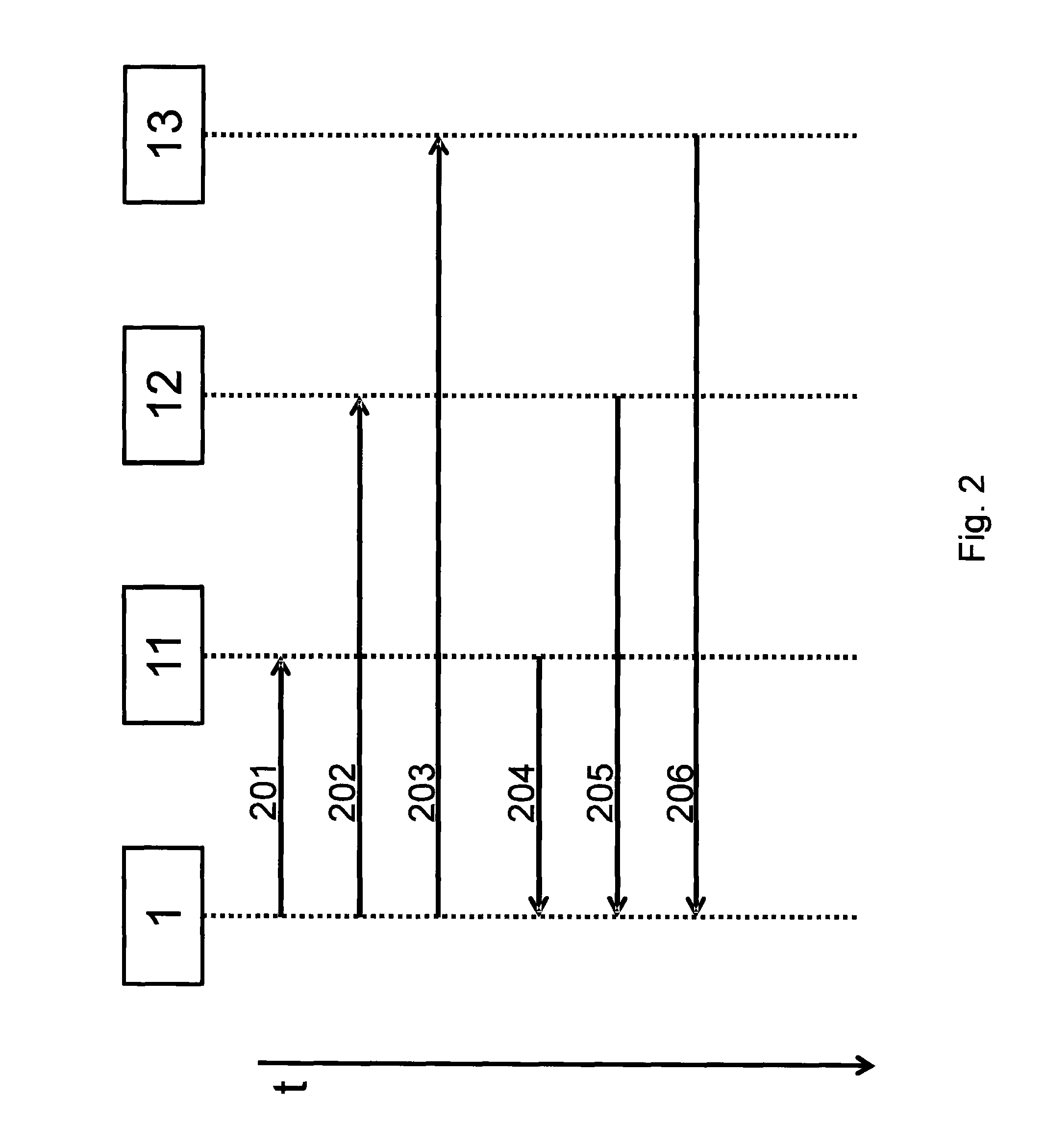Method for generating a key in a network and user on a network and network
a network and key technology, applied in the field of methods for generating secret and cryptographic keys in networks, can solve the problems of limited bandwidth for data transmission, high computational complexity, and limited suitability of resource-restricted nodes, and achieve the effect of increasing the number of participating users, improving the performance capacity of key generation, and reducing the effective key generation time for the overall key
- Summary
- Abstract
- Description
- Claims
- Application Information
AI Technical Summary
Benefits of technology
Problems solved by technology
Method used
Image
Examples
Embodiment Construction
[0024]The present invention relates to a method for automatically generating symmetrical, cryptographic keys based on physical channels between nodes of a wireless or wired communication system, i.e., between users of a network. Therefore, without high outlay, symmetrical encryption methods may be used to implement various security goals, which is of interest in particular for applications in the field of machine-to-machine communication, i.e., for example, for the transmission of data between various sensor and / or actuator nodes.
[0025]The reciprocity and the inherent randomness of these transmission channels between the nodes are utilized. This may take place as described hereafter, for example. Two nodes estimate a specific number of channel parameters, possibly also over time. These channel parameters are suitably quantified by both nodes. Preferably, this is followed by measures for noise reduction and / or error reduction, for example, by using error-correcting codes. With the ai...
PUM
 Login to View More
Login to View More Abstract
Description
Claims
Application Information
 Login to View More
Login to View More - R&D
- Intellectual Property
- Life Sciences
- Materials
- Tech Scout
- Unparalleled Data Quality
- Higher Quality Content
- 60% Fewer Hallucinations
Browse by: Latest US Patents, China's latest patents, Technical Efficacy Thesaurus, Application Domain, Technology Topic, Popular Technical Reports.
© 2025 PatSnap. All rights reserved.Legal|Privacy policy|Modern Slavery Act Transparency Statement|Sitemap|About US| Contact US: help@patsnap.com



